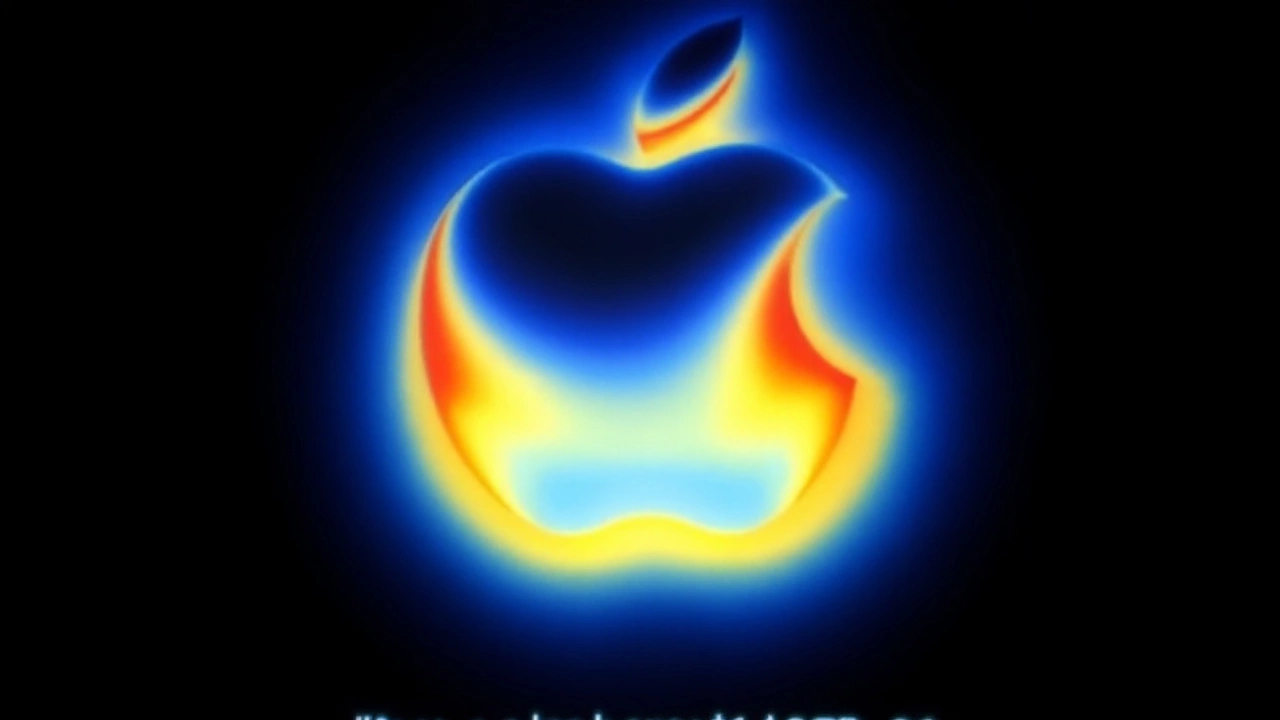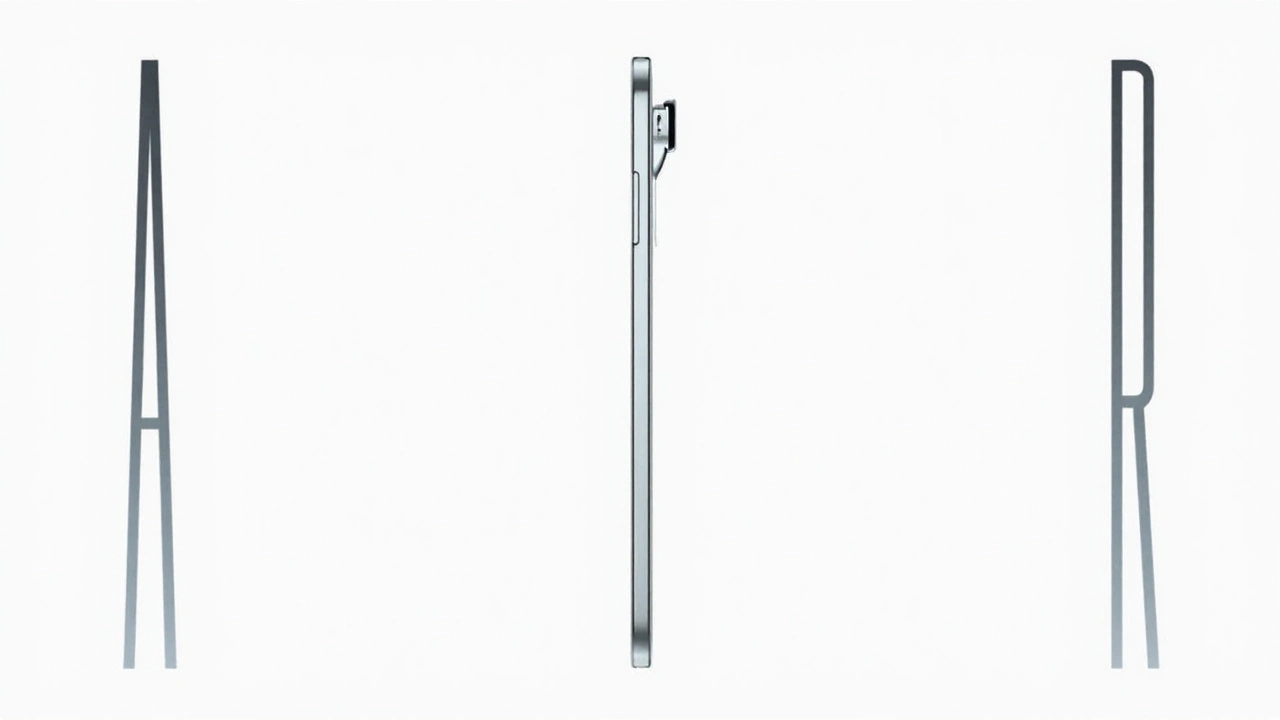Apple just made its thinnest phone ever, and it isn’t a concept or a one-off. The new iPhone Air is only 5.6mm thick—slimmer than Samsung’s Galaxy S25 Edge—and it’s not a cut-down model. It replaces the Plus in Apple’s lineup and arrives with flagship parts, an OLED display that stretches to 6.5 inches, and Apple’s latest silicon built for speed and on-device AI. The big swing? It’s eSIM-only everywhere, not just in the U.S.
Announced on September 9, 2025, this iPhone is Apple’s clearest statement yet that thin can still mean powerful. The rounded titanium frame, Ceramic Shield 2 glass, and a new, flatter camera plateau give it a clean profile that looks intentional, not fragile. Apple says it did this without trimming the basics: all-day battery claims, an IP68 rating good for 6 meters for up to 30 minutes, and performance that it compares—again—to MacBook Pro territory.
Thinner than ever, without the usual compromises
Phones that chase thinness often pay for it. Batteries shrink, cameras get worse, heat becomes a problem. Apple is trying to show it can sidestep those trade-offs by redesigning more than the shell.
Start with the display. The 6.5-inch Super Retina XDR OLED is tuned for both punch and power savings. ProMotion supports adaptive refresh up to 120Hz when you’re gaming or scrolling, then drops as low as 1Hz on the Always‑On display to sip power when you’re not touching it. The screen pushes 2736-by-1260 resolution at 460 ppi. Peak brightness hits 3000 nits outdoors, 1600 nits for HDR video, and 1000 nits typical indoors—numbers aimed at beating glare without washing out colors.
Under the glass, the A19 Pro is the headline. Apple frames it as delivering “MacBook Pro-level” performance in a 5.6mm chassis. That line matters less for marketing and more for the kind of work Apple wants this phone to do: on-device AI features in iOS 26, higher-end gaming with dynamic upscaling, faster photo pipelines, and heavier multitasking without thermal throttling.
Connectivity gets a similar refresh. A new C1X modem and N1 networking chip are Apple-designed parts that tie the radio stack tighter to the A19 Pro. Support for Wi‑Fi 7 should allow higher peak speeds and lower latency in homes and offices that are upgrading routers, with features like wider channels and more reliable multi-link connections. Bluetooth 6 compatibility is here too, setting the stage for higher bandwidth accessories and more stable multi-device audio. Thread support points at Apple’s smart home ambitions, making the phone a steadier controller for Matter gear.
Camera hardware takes a different path this year. The iPhone Air uses a single 48-megapixel Fusion Main camera that promises 2x optical-quality shots without a separate telephoto lens. It’s a play for simplicity and slimness—one big sensor instead of a stack of smaller ones—and it keeps the rear camera block flatter against the back. On the front, there’s an 18-megapixel camera with Center Stage, which reframes automatically whether you hold the phone horizontally or vertically. A new dual capture mode records from the front and back at the same time, useful for creators who want reaction and scene together without editing tricks.
The chassis tells its own story. A polished titanium frame keeps weight down to 165 grams (5.82 ounces), while the updated Ceramic Shield 2 on both sides adds durability and a new anti-reflective layer to cut glare. The “plateau” camera block moves away from the stepped islands we’ve seen on recent phones, giving the back a flatter, tidier look even with that large 48MP sensor.
Battery life is the quiet question with any 5.6mm phone. Apple says it uses a high‑density cell and a reworked internal layout to keep the promised all-day endurance. For people who push hard—travel days, long shoots, heavy maps use—Apple is introducing a slim MagSafe battery pack made just for the Air’s thinner frame. That accessory hints at how the company expects power users to handle long hauls without bulking up the phone itself.
Apple is also finishing what it started with the iPhone 14 in the U.S.: there’s no SIM tray anywhere, in any market. Going eSIM-only worldwide makes the housing tighter, improves water resistance, and removes a break point on the edge of the phone. It also forces a faster shift for carriers and travelers—no more swapping plastic cards at the airport, but better remote setup and less risk if your phone is lost or stolen, since the eSIM can’t be pulled.
iOS 26 ships on the Air, and this is the first mainstream iPhone designed around Apple Intelligence from day one. Features like Visual Intelligence and Live Translation run on-device when possible and lean on private compute when needed. Apple is stressing that it can power these experiences without slurping your data into a cloud profile—and the A19 Pro is the chip that makes that claim believable.
- Thickness: 5.6mm
- Weight: 165g (5.82 oz)
- Display: 6.5-inch Super Retina XDR OLED, ProMotion 1–120Hz, 2736×1260 at 460 ppi, 3000 nits peak outdoors, 1600 nits HDR, 1000 nits typical
- Chip: A19 Pro; Apple C1X modem; Apple N1 networking
- Wireless: Wi‑Fi 7, Bluetooth 6, Thread
- Cameras: 48MP Fusion Main (2x optical-quality zoom); 18MP front with Center Stage; dual capture video front+rear
- Build: Polished titanium frame; Ceramic Shield 2 front and back with anti-reflective coating; new plateau camera design
- Durability: IP68, rated for 6m up to 30 minutes
- SIM: eSIM-only worldwide
- Software: iOS 26 with Apple Intelligence, Visual Intelligence, Live Translation
- Colors: Space Black, Light Gold, Sky Blue, Cloud White
- Storage: 256GB, 512GB, 1TB
- Price: from $999 (256GB)
- Dates: pre-orders Sept 12; in stores Sept 19, 2025
The color lineup leans premium—Space Black, Light Gold, Sky Blue, Cloud White—and the accessories follow suit. There are slim cases in Frost and Shadow finishes, bumper cases that match each colorway, and even crossbody straps if you want hands-free carry without a full bag. It’s fashion meets function, designed so the slender frame doesn’t disappear under bulky protection.

What it means for buyers—and for everyone else
If you’ve been holding out for a big screen without the heft of a Pro Max, this phone is aimed squarely at you. Replacing the Plus tells you how Apple is reshaping its lineup: fewer overlapping mid-tier models, clearer tiers by size and materials, and a new focus on thin-and-light as a feature in itself. The Air name signals that strategy—lighter case, same class of power.
The eSIM-only move is the most controversial change. For many buyers, setup will actually get easier. If you’re upgrading from a recent iPhone, eSIM Quick Transfer can move your number in minutes. Frequent travelers can buy and load local plans before landing, and switch profiles without hunting down a kiosk. On the flip side, people in regions with slower carrier support will need to check compatibility and may have to lean on digital-only plan sellers. The upside is security: thieves can’t remove a SIM, and carriers can lock and recover accounts faster without mail-in cards.
That single 48MP camera is a bold choice too. Most flagships in this price bracket use at least a wide and a telephoto, sometimes a triple. Apple is betting that a large sensor with better processing—and clean 2x crops—covers most daily shots, keeps the phone thin, and avoids the trade-offs of stacking more lenses in a 5.6mm body. Dual capture video will appeal to vloggers and journalists who want subject-and-self in one take, and Center Stage on the front camera makes video calls feel less awkward in any orientation.
Performance talk isn’t just about headline speeds. The A19 Pro is the engine for iOS 26’s new on-device features. Visual Intelligence pulls info from what’s on your screen or in the camera viewfinder. Live Translation helps conversations across languages with less lag. Both need neural throughput and memory bandwidth much higher than last-gen phones to feel instant. If you don’t care about AI features today, you might still notice the headroom in how long the phone stays fast over years of iOS updates.
Wi‑Fi 7 support matters if you’re upgrading your home or office network. The tech allows wider channels and can maintain multiple links for steadier performance in crowded spaces. Bluetooth 6 suggests better multi-device audio and more reliable connections to future earbuds, glasses, and controllers. Thread makes the phone a steadier remote for smart home gear, avoiding some of the lag and drops that plague older hubs.
Battery life is the hard one to judge on paper. Apple’s “all-day” line depends on your day. High-density cells help, and the 1Hz Always-On display mode cuts idle drain, but two hours of 4K recording or a long 5G hotspot session is a stress test for any thin phone. The slim MagSafe battery pack is Apple’s answer for those edge cases. If you rarely hit those extremes, the lighter chassis is the benefit you feel every minute; if you do, that pack becomes a smart add-on rather than a crutch.
Durability will be watched closely. Apple points to Ceramic Shield 2 and the new anti-reflective layer as better against micro‑scratches and glare, and titanium resists dings better than aluminum. The flatter camera plateau should reduce rocking on a desk. The missing SIM tray helps with water resistance and structural integrity along the frame. Case makers will still have a field day, but the base design seems more resistant to the everyday knocks that can chip softer alloys.
For creators and gamers, the Air looks nimble. ProMotion at 120Hz keeps fast motion smooth, while Apple’s silicon traditionally holds frame rates better over long sessions than many rivals, thanks to tight hardware-software tuning. The dual capture video mode and on-device AI tools speed up workflows for short-form content—think talking to the camera while showing what you see, without post edits. The lighter body also makes it easier to mount on gimbals and rigs without counterweights.
Apple’s pricing strategy is straightforward: $999 to start for 256GB, with 512GB and 1TB options for people who keep libraries on-device. That baseline storage is a quiet but important shift—256GB at entry makes 4K video and big app libraries less of a squeeze. Pre-orders begin Friday, September 12. General availability lands a week later on Friday, September 19, 2025.
If you’re choosing between the Air and a Pro model, the trade-offs are now more about materials and camera variety, not raw speed. The Air gives you thin and light with a big screen, Apple’s top-end chip, and the new radio stack. You give up extra lenses and, likely, some pro photo features reserved for the higher tier. If you don’t need a periscope zoom or macro tricks, the Air’s cleaner design and lower weight may be the better everyday pick.
The larger industry impact is clear. By pushing eSIM-only beyond the U.S., Apple will nudge carriers to improve their digital activation flows. By shipping Wi‑Fi 7 and Thread broadly, the company sets a baseline that accessory makers will follow. And by proving a 5.6mm phone can still hit the performance marks, it will spark another round of thin-versus-everything debates across the Android camp.
There’s also a style story here. The color palette—Space Black, Light Gold, Sky Blue, Cloud White—skews refined rather than flashy, and the first-party cases echo that. The crossbody straps show Apple watching how people actually carry phones in cities and at events. It’s a small detail, but it meshes with the idea of the Air: make the phone easier to live with, not just faster on a spec sheet.
Bottom line for buyers: the iPhone Air is a confident rethink of Apple’s mid-to-large flagship slot. It’s the thinnest iPhone ever, but it doesn’t act like a compromise. Check your carrier’s eSIM support, pick your storage wisely if you shoot a lot, and if you’re a heavy traveler or creator, consider that slim battery pack. Pre-orders open September 12, and shelves fill on September 19.
